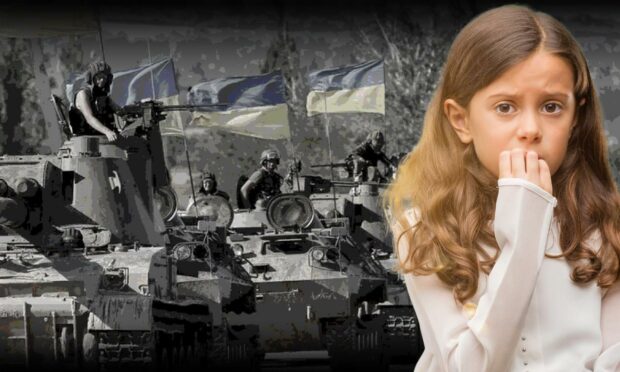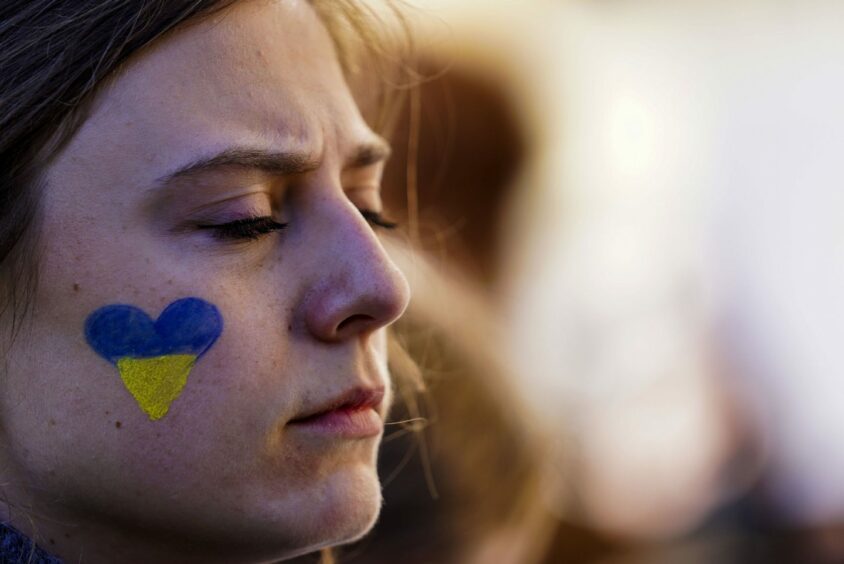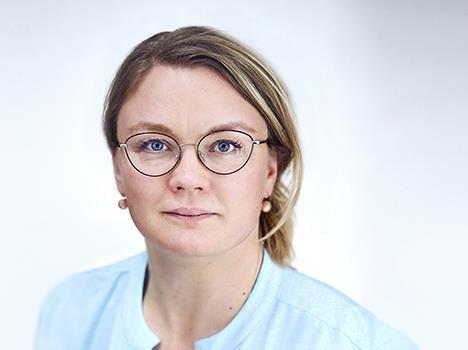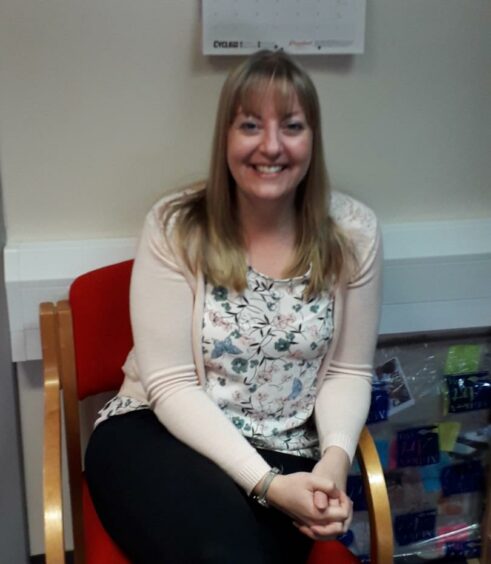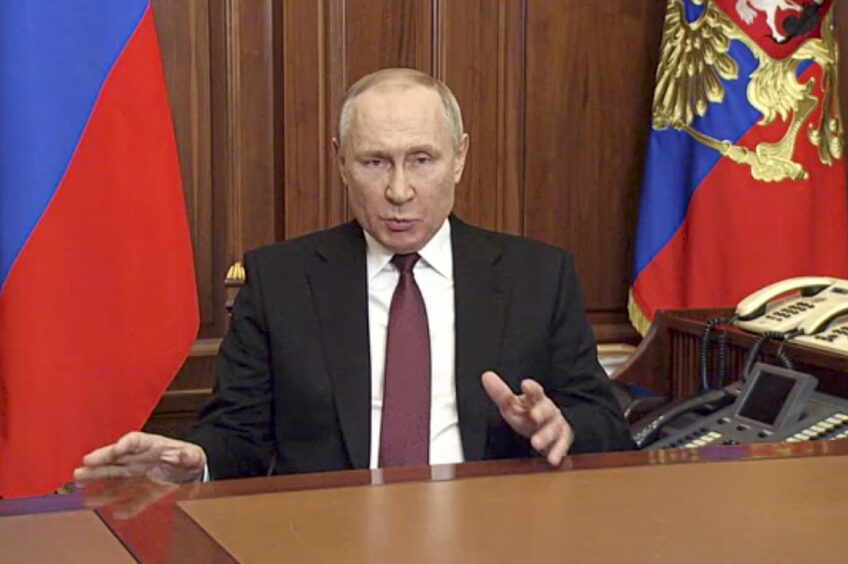Let children talk about their fears over the Ukraine crisis, but warn them about misinformation.
That is the advice to parents of kids with heightened anxiety about the Russian invasion.
Having just emerged from almost two years of pandemic restrictions, anecdotal evidence suggests many children are struggling to process the worrying news from eastern Europe.
In an Instagram survey of young people in the UK, 78% said the conflict has made them frightened about the future.
Russian president Vladimir Putin announced last week that he had put the country’s nuclear forces on high alert.
‘World War Three’ heard in the playground
Talk of ‘World War Three’ has been heard in the playground, with parents being tasked with explaining why Russia has invaded its neighbour.
As the news moves from Covid to geopolitical tensions, what can we do to ease our kids’ worries?
Advice from Save the Children focuses on five key points:
- Make time to listen when your child wants to talk.
- Tailor the conversation to the child. Be mindful of the child’s age and maturity as you approach the conversation with them.
- Validate their feelings. They should not feel judged or have their concerns dismissed. When children get the chance to open up about things upsetting them, it can create a sense of relief and safety.
- Reassure them that adults all over the world are working hard to resolve this. Remind children that this is not their problem to solve. They should not feel guilty about playing, seeing their friends, or doing the things that make them happy.
- Give them a practical way to help. This can be through donating food, fundraising, or sending letters to decision-makers.
Ane Lemche, a psychologist and child counsellor with the children’s charity, said children around the world might not fully understand what is happening in Ukraine and may have questions about the images, stories, and conversations they are exposed to.
“What is happening in Ukraine can be frightening for both children and adults,” said Ms Lemche.
“Ignoring or avoiding the topic can lead to children feeling lost, alone and more scared, which can affect their health and wellbeing.
“It is essential to have open and honest conversations with children to help them process what is happening.”
How much info is too much?
Allie Scott is mental health and counselling manager at the University of the Highlands and Islands (UHI). Her background includes many years working with children and young people.
She said much depends on the age and the maturity of the child.
“For young children, it’s very much about not overwhelming them. Not letting them watch very scary news reports where there are lots of loud noises and things that can be very triggering.
“We need to make sure we’re not giving them too much information that they can’t fully understand. And sometimes finding metaphorical ways of helping them to understand can be really useful.
“We should also think about when [in the day] we’re talking to them. Don’t talk to them about scary things just before they go to sleep, for example.
“Find creative ways to go through it – not everybody can talk. If they can’t use words to express how they’re feeling, try play, or pictures.
“For 10-year-olds and that sort of age, where they’re asking very direct questions, it’s about being able to calmly have a conversation with them around that. But again, not giving them lots and lots of information that they don’t need to have.
“Staying very factual, and minimizing the shock value of it all, is really important.
“Teenagers will have a lot more access to social media and will perhaps be staying up later to watch the news reports.
“Again, it’s about giving them a very open space to have a discussion about what is happening, but making sure the facts are correct.
“As we all know, there’s lots of stuff out there that tries to shock and scare.
“It’s not about hiding reality, it’s about sensitively working out what to share and what not to share.
“We’re not pretending it isn’t happening. We’re just choosing our language and our information levels carefully.”
It’s okay to be scared – but WE are safe
Ms Scott stressed the importance of normalizing children’s anxiety, but also of being proactive about how to react to it.
“It’s really important that we normalize anxiety in times like this,” she said.
“These are normal human emotions. It’s okay to be scared.
“We can talk about how we are scared, but we can also talk about how we are safe, and how we can help people who are not safe at the moment.
“Something my children and I are doing tonight is taking a bag of clothing and the car seats we don’t use down to the local drop-off point.
“That makes them feel like they’re doing something, which in turn makes them less anxious. Children often want to help.”
Parents suffer from anxiety too
Part of normalizing anxiety is accepting that parents themselves are not immune to it. The conflict has left just as many adults feeling anxious and fearful of the future. But it is important not to let your own anxiety affect your children.
Easier said than done perhaps, but there are basic steps people can take.
“We have to be really careful about not instilling our fears in our children,” said Ms Scott.
“That even goes for things like spiders!
“Be in a calm place when you have a discussion, stick to facts, and empathize with what they’re feeling.
“That could mean not talking to them about it when you’ve just watched the news and your own anxiety levels are high.
“You can tell your kids you’re feeling anxious, but it’s about then saying ‘this is what mummy or daddy is doing about it’.”
She added: “It’s a horrendous situation, but there are opportunities to talk to children about things like peace and hope.
“How do we look after ourselves in times of stress and anxiety? When we can’t fix a problem ourselves, what can we do to regulate our emotions?
“There are a lot of good teaching moments in this situation.”
Misinformation – a 21st century problem
Unlike previous wars, one of the biggest issues surrounding our perception of events in Ukraine is misinformation.
Within 24 hours of Russian troops crossing the border, Northfield Academy in Aberdeen contacted parents to warn about the dangers of misinformation.
The school said: “We know that the events in Ukraine are extremely worrying and frightening for a number of people within our school community.
“Information about the ongoing conflict is available from a number of sources, however some of these may not be providing reliable information and could well be the source of ‘fake news’. This includes videos shared on platforms like TikTok, Instagram and Snapchat.”
How big is the gap between what kids hear and what is actually happening? What is the risk of kids filling in the gaps when they don’t have the full story?
“We all do that, don’t we?,” said Ms Scott.
“We all imagine the worst case scenario. But yes, a lot of children catastrophize, go straight from A to Z.
“Giving them enough factual information to help them manage that anxiety is really important.
“Don’t let them fill in the blanks themselves. But giving them all the details is not helpful.”
She added: “Not everything you read on the internet is the truth.
“There are particular sources you should be tapping into, and others you should be taking with a massive pinch of salt.
“That’s something to get across to older children in particular, who are more likely to have unsupervised access to the internet.”
The younger the child, the simpler the explanation
Dr Ruth Woods is a psychology lecturer at Robert Gordon University (RGU) in Aberdeen, specializing in children. She said situations like the one in Ukraine left older children – who have access to social media – particularly vulnerable.
“If your child uses social media, help them to understand that some of what they read there is likely to be misinformation,” said Dr Woods.
“This is also an opportunity to teach about algorithms, which affect what they do and don’t see.
“Ultimately, it can end up with their social media feeds quickly filling up with a certain point of view, suggesting a consensus which may not really exist.”
She added: “Children may well draw on unexpected sources or experiences to make sense of what’s happening, and may also be influenced by what their classmates are saying at school.
“Try to find out what they already believe as this may be different from what you think they believe.
“Try to stick to just giving the information needed to answer their questions. The younger the child, the simpler your explanation is likely to be.”
More from the Schools and Family team
Pocket Money: At what age should you start giving it, how much, and for what?
North-east pupils plant tree for Queen’s platinum jubilee
Calum Petrie: We Dads do our bit, and don’t need a ‘pat on the back’
